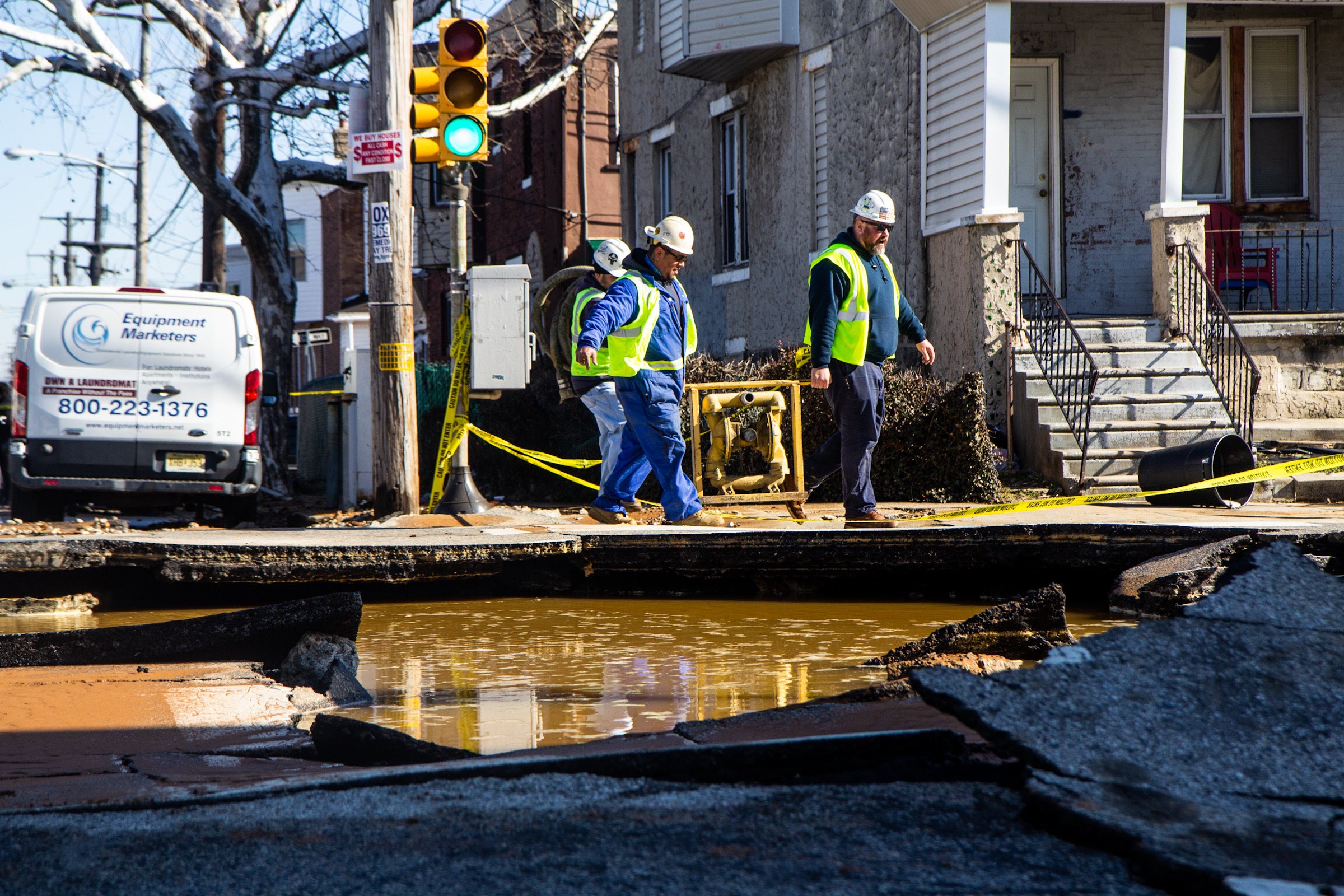A Comprehensive Guide to Water Main Breaks, Their Impact, and Repair Times
Picture this: you turn on the faucet, expecting a refreshing stream of water, but instead, you’re greeted by a mere trickle or, even worse, nothing at all. A water main break has struck, disrupting your daily routine and leaving you wondering how long it will take to fix. This article delves into the intricacies of water main breaks, exploring their causes, impact on our lives, and the repair process involved.

Image: whyy.org
What is a Water Main Break?
A water main break occurs when a major pipe that carries water to homes and businesses ruptures. These pipes are typically located underground and are crucial for supplying clean water to our communities. The causes of water main breaks are varied, ranging from aging infrastructure to ground movement and even extreme weather events.
The Impact of Water Main Breaks
Water main breaks have a significant impact on our daily lives. They can disrupt water service, leading to inconvenience and frustration for residents and businesses. In severe cases, they can cause flooding, damage property, and create health hazards due to contaminated water. Additionally, water main breaks can strain emergency services as fire hydrants may become inoperable, hindering firefighting efforts.
Repairing Water Main Breaks: A Step-by-Step Process
Fixing a water main break is a complex and often time-consuming process, involving several key steps:
1. Locating the Break: Utility crews use advanced equipment, such as ground-penetrating radar, to pinpoint the location of the break.
2. Isolating the Break: The damaged section of the water main is isolated by closing valves, allowing the rest of the system to continue functioning.
3. Excavating the Break: The ground is carefully excavated to access the damaged pipe, taking care not to damage other utilities or structures.
4. Repairing or Replacing the Pipe: The damaged pipe is either repaired or replaced with a new section. This step involves welding or using specialized equipment to ensure a secure connection.
5. Restoring Service: Once the pipe is repaired or replaced, the water main is gradually refilled and pressurized. Air pockets are removed, and the system is restored to full functionality.
Image: www.portlandoregon.gov
Factors Affecting Repair Time
The time it takes to repair a water main break varies depending on several factors:
1. Size and Location of the Break: Larger breaks and those in hard-to-access areas take longer to fix.
2. Weather Conditions: Extreme heat, cold, or rain can slow down repair efforts.
3. Need for Additional Work: If the break has caused damage to other infrastructure, such as roads, it may need to be repaired before water service can be restored.
4. Availability of Materials and Equipment: The availability of necessary parts and equipment can impact repair time.
5. Complexity of the Repair: Some repairs, such as those involving complex welding or pipe re-routing, require specialized expertise and take longer.
Communication and Transparency
During a water main break, it’s crucial for utilities to communicate with affected residents and businesses. They should provide regular updates on the situation, estimated repair times, and any potential impacts on water service. Transparency and timely communication build trust and minimize inconvenience.
How Long Does A Water Main Break Take To Fix
Conclusion
Water main breaks are an unfortunate reality in our aging infrastructure. While they can cause significant disruption, understanding the repair process and the factors that affect repair time can help alleviate anxiety and prepare us for potential impacts. By working together with utility companies and actively engaging in communication, we can navigate these situations effectively and minimize inconvenience to our daily lives.